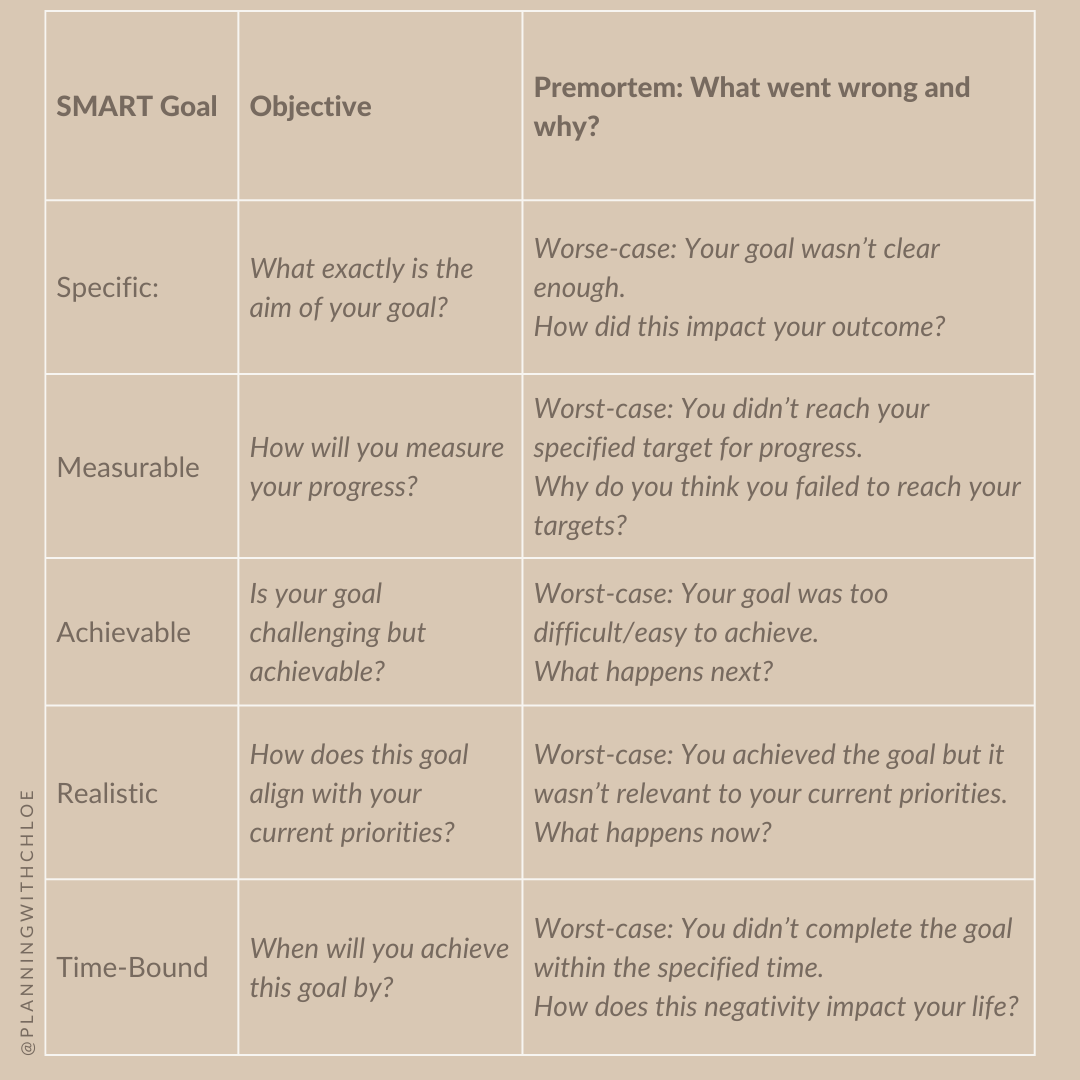Strengthen Your Goals by Preparing for the Worst-Case Scenario
How the mindset of preparing for the worst-case scenario can increase your chances of success, plus ways you can apply worst-case thinking to your SMART goal planning.
I recently learned about the phrase "Premeditatio Malorum" while listening to the audio book "The Obstacle is the Way" by Ryan Holiday *. The following day, I started to think about how Premeditatio Malorum, could be applied in my daily life.
You see, it was the very next day after hearing this term for the first time, I came across a YouTube video where Keith Cunningham, also known as the Rich Dad from the book Rich Dad, Poor Dad, refer to a ‘Premortem’, another term used for Premeditatio Malorum, but he applied the concept to business and mitigating risk.
Now, when something appears to me in 2 or 3 unrelated places, I take it as a cue to dig deeper, so let’s dive in…
What exactly is Premeditatio Malorum or a Premortem?
If you’ve not heard of the term “Premeditatio Malorum” it's a Latin phrase that basically means mentally preparing for the worst-case scenario, it’s literal translation is “premeditation of evils” and, as I mentioned before, it’s also referred to as a premortem.
According to the Harvard Business Review in an article titled Performing a Project Premortem:
A premortem is the hypothetical opposite of a postmortem. A postmortem in a medical setting allows health professionals and the family to learn what caused a patient’s death. Everyone benefits except, of course, the patient. A premortem in a business setting comes at the beginning of a project rather than the end, so that the project can be improved rather than autopsied. Unlike a typical critiquing session, in which project team members are asked what might go wrong, the premortem operates on the assumption that the “patient” has died, and so asks what did go wrong. The team members’ task is to generate plausible reasons for the project’s failure.
Although I am not part of a team within a large corporation, I wondered how the premortem technique could be useful for goal-setting, whether they are business-related or not. So, I did some digging on how to mix the premortem technique with SMART goals to up my odds of hitting my goals by preparing for the worst-case scenario.
Understanding the SMART Goal-Setting Framework
Before we fully dive into how premortem can be combined with the SMART goal-setting framework, let's first understand what SMART stands for.
Specific: Goals should be clear and specific. Unclear goals can be hard to achieve since there's no clear understanding of what needs to be done.
Measurable: Goals should be measurable, which means you should be able to track and evaluate progress towards them.
Achievable: Goals should be challenging, but also possible to achieve. Unrealistic goals can cause frustration and demotivation.
Relevant: Goals should be relevant to the individual and their overall objectives. This means that the goal should align with the individual's values, interests, and priorities.
Time-bound: Goals should have a specific timeframe for completion. This creates a sense of urgency and helps to prevent procrastination.
Now that we have a concise understanding of the SMART framework, let's explore how premortem can be integrated into each component.
SMART-P a Technique for Integrating a Premortem with SMART Goals
After giving it some thought, I figured the best way to add a premortem to the SMART goal setting process was to break down each objective and figure out what could go wrong. To do this, just ask yourself, "What's the worst that could happen and why?".
In the table below, I’ve outlined questions that you could ask yourself while setting goals to help you get started. The main take-away of this technique is on identifying what went wrong, why it went wrong, and how it affected the outcome but to do this analysis at the beginning of your goal-setting process, rather than at the end.
Conclusion
A premortem can be a valuable tool for goal-setting. By imagining the worst-case scenario, you can pinpoint potential obstacles, create measurable targets, and stay motivated throughout the process. Integrating the SMART-P technique into your goal-setting framework can help you create a roadmap for success with the pitfalls already marked out.
* Affiliate link — Please note: As an Amazon Associate I earn from any qualifying purchases you may make after clicking these links.





